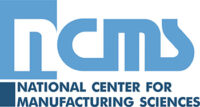January 30, 2025
Introducing new and innovative technologies can be disruptive and expensive and require significant capital expenditures to integrate into a business’s operational workflows and processes. However, the benefit that they can provide to improved operations is significant. Incorporating digital twin technology can provide informed data-driven decision-making, continuous process monitoring, improved training outcomes, and provide real-time data analysis. This type of technology implementation removes much of the risk when upgrading existing facilities and equipment and allows decision-makers to “see” the best-case scenarios.
The DOD is focusing on modernization to meet the needs of the future force. Particularly, the Army created a 15-year strategic, deliberate, and fiscally responsible OIB Modernization Implementation Plan (MIP). Part of that plan includes investing and employing the latest technologies for maximum system effectiveness to stay relevant and competitive with industry. To date, the Army has invested in multiple digital engineering initiatives across the OIB resulting in notable improvements and efficiencies, however, most efforts have focused on specific process level steps within the manufacturing operations rather than focusing on an end-to-end value stream. To fully leverage the value of digital engineering tools, OIB installations require visualization of processes at value stream level to identify bottlenecks, create optimized solutions and measure impacts. This effort will focus on providing WVA with systematic tools to identify value streams constraints and process improvement technologies to address those constraints. This effort will provide the framework to identify and address current/future process constraints at WVA.
Background
OIB installations lack visualization of processes at value stream level to identify bottlenecks, create optimized solutions, and measure impacts. The government is looking for a suite of tools to identify value stream constraints and process improvement technologies to address those constraints.
Objectives
This effort will result in a discrete simulation model of the existing industrial processes at Watervliet Arsenal (WVA) that reflects optimize technologies and processes to create the Arsenal of the future. This set of deliverables can be used as a model for commercial entities seeking to optimize their ecosystem, to improve efficiencies, and save costs. Key deliverables for this effort are:
- Discrete simulation model of WVA production value stream (Current state)
- Discrete simulation model of WVA production value stream (Optimized state)
- Standardized performance metrics of current- optimized models
- Implementation plan identifying process improvement initiatives across value stream that meet established goals.
- Quarterly reporting and a robust distribution A final report will be required for this effort.
Submission Requirements
Interested parties should provide a White Paper response with NO MORE than FOUR (4) pages, not including a cover page, using the format below.
The White Paper must:
- Describe general approach to include phases to accomplish the objective
- Describe assumptions
- Detailed approach to the objective
- List of tasks
- List of deliverables
- High level project schedule and timing
- Describe rough order of magnitude cost
- A more detailed cost analysis will be expected later in the process
- A description of recent and relevant experience in accomplishing similar evaluations and using modeling and simulation tools and processes
- URLs to corporate presentations including engineering, modeling and simulation, prototyping, testing, and manufacturing capabilities, if available.
Deadline
Responses are due to opportunities@ncms.org by COB 19 February 2025.
Evaluation Criteria
Technical Feasibility. How technically feasible is the proposed solution, given the present state of the technology? Solutions with a lower technological risk profile are favored.
Responsiveness. How responsive is the proposed solution? Solutions responsive to the problem identified, without creating new problems, are favored.
Viability. How viable is the proposed solution, given existing organizational and regulatory environments? Solutions compatible with existing DoD, and federal policies, processes, and procedures are favored.
Desirability. How desirable is the proposed solution to the eventual end-user? Solutions easily adaptable, useful, and implementable are favored.
Funding. Does funding reasonably exist to fund the proposed solution? Solutions with lower prices are favored.




